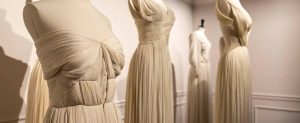Modernist Architecture and Design: A View to the Future
In this new series we will explore the Modernist Movement in architecture and design and how it has influenced our society and lifestyle from its inception through today.
By 1930’s no longer desiring to be influenced by traditional ideals and rules of the past, architects and designers such as Walter Gropius, Ludwig Mies van der Rohe, Le Corbusier, Alvar Aalto, and Charles and Ray Eames’ began to experiment with new forms, techniques, and surprising and unexplored materials. It was not merely a new aesthetic they chose to impress upon the world, but a new way of living and thinking now known as the Modernist Movement.
 La Ville radieuse (The Radiant City), Le Corbusier, 1935
La Ville radieuse (The Radiant City), Le Corbusier, 1935
In part these modern architects’ vision was a response to the Western European Industrial Revolution’s advancements in technology and science. The new designs mirrored the progress of the inventions that had profoundly changed everyday life: automobiles, airplanes, television, and telephone. Each of these inventions challenged an old perception of time and space. Travel now became faster and it was much easier to visit previously unknown lands. Information became more accessible and immediately transmittable. Seemingly overnight, a new, unexplored territory dawned as never before: the future. To the modernist, this future brought the hope of peace, community, and commonality among neighbors. The men and women behind the movement boldly and unashamedly pursued change: a positive change that looked to embrace a future untethered to the dictates of the past. They hoped to influence ordinary families to consider the art and design in the function of the everyday tools of living. Their ideals for design looked beyond the frame of the structure and included a new and unique view of how to live within it. They sought to share with the world their idea of utopia after years of war, destruction, and division.
 Paimio Chair designed by Alvar Aalto, 1932
Paimio Chair designed by Alvar Aalto, 1932
In the preceding Late Victorian era, buildings had wood or stone exteriors, and were finished with heavy ornate turrets, gables, arches and “˜gingerbread’ trims–details harkening as far back as the medieval period. Much of 20th century modernism was predicated on a strict break from tradition it strived to present clean minimalist lines where function lay at the core of idea conception, hand in hand with a new cleaner, less cluttered aesthetic. Theoretically, modern design refused to differentiate between a building and object’s intended use and the beauty found in its inherent shape. Such changes are best expressed in the motto of the period: form follows function.
Moulded Plywood Chair, Charles and Ray Eames, 1946
In addition to advancements in technology, the desire to provide a better style of living for the war-stricken population provoked the minds of Gropius in Germany and Le Corbusier in France. Both dreamed of a type of housing that would bring social benefit to the inhabitants. They believed their commingled high-rises would provide the utopian lifestyle they longed to give to the world. In the 1920’s Le Corbusier’s open plan residential design was perceived as quite progressive for the time and encompassed the many ideals of the Modernist architects. However, it was the Kensal House in London designed by Maxwell Fry in 1937 that successfully accomplished what the architects desired to create with regards to social housing schemes during this time. Le Corbusier’s friend, Alvar Aalto, who was as concerned with the interior design of a structure as much as the structure itself, brought modern architecture to his native Finland and gave inspiration to others around the world.

 Barcelona Pavilion, Mies Van der Rohe, 1929
Barcelona Pavilion, Mies Van der Rohe, 1929
Similarly in America van der Rohe and the Eames were awakening the new point-of-view to the population. Particularly in commercial construction, van der Rohe’s revolutionary design concepts now towered above the American landscape. The graceful, yet formidable glass, steel, concrete and brick structures marked the skylines as no other building yet had. On the West Coast, Charles and Ray Eames were dynamically and literally educating America, and eventually the world, by exposing the artistic value that could be found in ordinary, functional objects and how they related to each other. They also encouraged various industries and manufacturers to embrace a more thoughtful aesthetic in their design.
Seagram Building, Mies Van der Rohe, New York
The fathers of Modernist architecture dramatically ushered in a new phase of design that is still influential today. Its roots can be seen from the grandeur of the world’s skylines to the simplicity of a glass vase. Just as the Modernist did, today’s contemporary architects and designers question long held societal perceptions and envision having the answers to them in their designs. Our society’s cultural boundaries are continuing to be pushed thanks to an ever transforming technology.
Join us again when in the next article we will look more closely at these groundbreaking architects’ and how they have contributed to today’s design. In following articles we will explore which store is one of the world’s most popular modernist home “˜supermarkets’, and how easily modernist design can add flair to home decor or personal style!




































8 Comments
Vivian Katz
Thank you for a brief, yet very succinct summary. Looking forward to more.
Robinette Fowler
Thanks, Vivian! Glad you enjoyed it!
Ralph
Fabulous. Excellent. Marvelous. Write more. You just saved me five years at Cornell Architecture. With the spare change, I’ll go out and buy a Duesenberg. Yes.
Robinette Fowler
Thanks, Scott! More coming!
Lynne
Love how this movement has integrated into fashion as well. Simple lines and basic materials.
Robinette Fowler
I agree, Lynne. I will be including a bit on that in a future article!
Greta Johnson
A nice article. I love modern architecture and have a subscripton to Dwell magazine to keep abreast of many new movements. Thanks for sharing this.
Greta Johnson
Robinette Fowler
Thanks Greta! I think you will enjoy the series, so stay tuned!